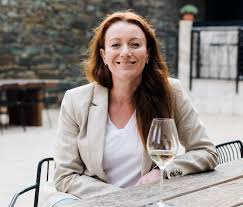G.H. Mumm has appointed award-winning winemaker Trina Smith as Mumm Terroirs Pacific Winemaker, overseeing production across Australia and New Zealand. Recognized as one of Australia’s foremost sparkling wine specialists, Smith brings over two decades of global experience spanning California, South Africa, and Italy.
Based in the Barossa Valley, she will lead winemaking for the Mumm Terroirs Collection, including Marlborough Prestige Brut, Brut Rosé, Central Otago Blanc de Noirs, and Tasmania Prestige Brut, while collaborating with the Maison’s Chef de Cave and regional growers.
Smith’s appointment reinforces Mumm’s commitment to crafting wines that express the unique terroirs of Marlborough, Central Otago, and Tasmania, three of the Southern Hemisphere’s leading cool-climate regions. Her leadership follows the successful launch of the Mumm Tasmania Prestige Brut (2022), a benchmark for Tasmanian sparkling wines and a reflection of the region’s growing significance, now accounting for over 40% of Tasmania’s total wine production.
Trina Smith states: “I’m thrilled to step into this role and continue building on Mumm’s legacy in Australasia. My focus will be on crafting wines that truly express the character of our region. Marlborough, Central Otago and Tasmania are world-renowned cool-climate regions, producing sparkling wines of exceptional finesse, energy and character and I look forward to shining an international light on our sparkling wines.”




 Champagne exports 2011 reached their second highest volume in five years – with sales close to the peak of 2007. Exports in 2011 were up by 5.1%, rising to a total of 141.2m bottles, the second largest volume ever achieved behind 2007 and only 9.5m bottles less than this peak, according to the latest statistics just released by Champagne’s governing body CIVC.
Champagne exports 2011 reached their second highest volume in five years – with sales close to the peak of 2007. Exports in 2011 were up by 5.1%, rising to a total of 141.2m bottles, the second largest volume ever achieved behind 2007 and only 9.5m bottles less than this peak, according to the latest statistics just released by Champagne’s governing body CIVC.